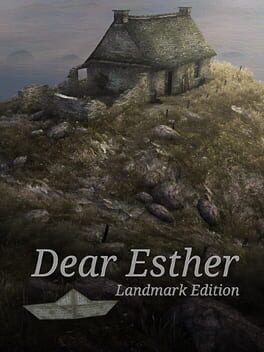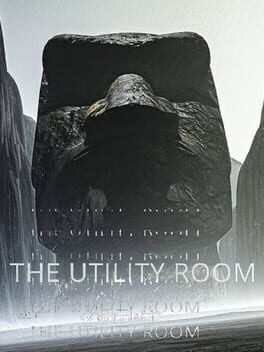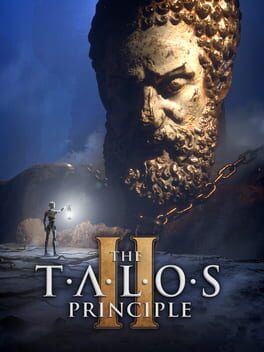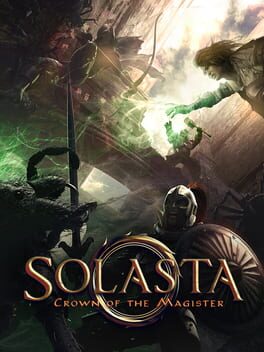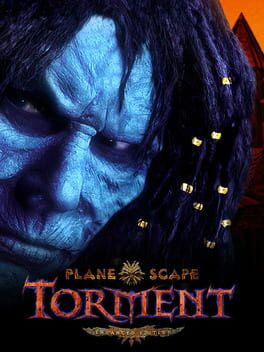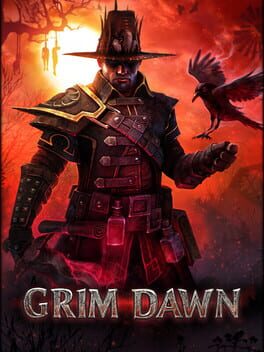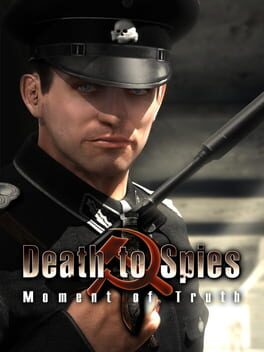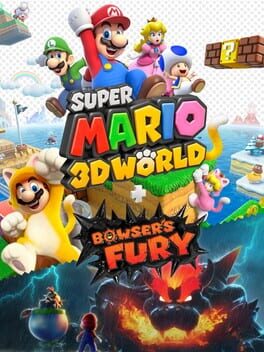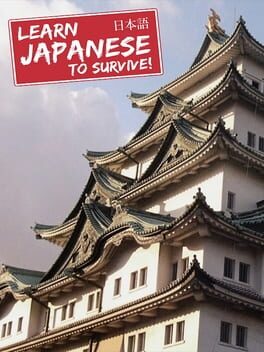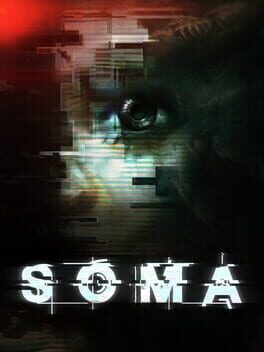AstrinSchmidt
2019
It is interesting to start, and while it can feel somewhat slow and boring when you get stuck, and the aesthetics of the websites do get old fairly quickly, the game does progress at a decent pace, bringing in frequent changes to shake up the landscape, and does not overstay its welcome. It took me 4.6 hours to reach the credits, and most of that time was undoubtedly spent reading random webpages in the game.
The gameplay starts off simple, but does eventually get fairly involved, requiring the player to think to combine information from multiple sources to find the answers the game tasks them with finding. The world-building (character writing) is surprisingly effective, condidering the game's limited scope.
Overall, if you can get it for cheap, it is hard not to recommend this short and sweet experience.
The gameplay starts off simple, but does eventually get fairly involved, requiring the player to think to combine information from multiple sources to find the answers the game tasks them with finding. The world-building (character writing) is surprisingly effective, condidering the game's limited scope.
Overall, if you can get it for cheap, it is hard not to recommend this short and sweet experience.
2023
I ended up doing three runs in one sitting, reaching the end of the time limit twice. The combat loop gets really repetitive, really quickly, and the characters don't really seem to have strong arcs like they did in The Friends of Ringo Ishikawa — things just sort of happen in response to the player's actions, where the world and characters feel kind of static and as though they lack agency compared to the world-shaping power of the player. In simpler terms, it feels like a combat/monopoly simulator with consequences, and less like a coherent story with characters — case in point, on one of my runs, I did not focus on attacking specific factions and basically no story ended up occuring, despite Seiji spending every day fighting and capturing districts.
Overall, this has Yeo's usual stylistics, good pixel art, and expanded and improved combat system, etc... but it doesn't really leave an impact on me like their first work.
Overall, this has Yeo's usual stylistics, good pixel art, and expanded and improved combat system, etc... but it doesn't really leave an impact on me like their first work.
2023
Firstly, for the positives: Some of the music is quite nice and the game manages to build a nice atmosphere as you traverse the environment...
That's about it. The negatives are much more numerous: the game is short and not very substantial, and what little story you do unlock by finding the collectables just make it all sound like a joke. A lot of the game is spent walking through caves (or platforming, as was the case in the 'extended' campaign I played... it was annoying), and these caves are generally pretty ugly and not very interesting to look at. I can't say I felt any tension or fear while playing the game, which some other people have claimed... I was also not impressed with the ending.
Overall, it's an enjoyable experience on a surface level — walking while listening to music and watching surreal imagery — but it's ultimately fleeting and doesn't leave me with much to think about.
That's about it. The negatives are much more numerous: the game is short and not very substantial, and what little story you do unlock by finding the collectables just make it all sound like a joke. A lot of the game is spent walking through caves (or platforming, as was the case in the 'extended' campaign I played... it was annoying), and these caves are generally pretty ugly and not very interesting to look at. I can't say I felt any tension or fear while playing the game, which some other people have claimed... I was also not impressed with the ending.
Overall, it's an enjoyable experience on a surface level — walking while listening to music and watching surreal imagery — but it's ultimately fleeting and doesn't leave me with much to think about.
The most damning thing I can say about The Talos Principle II is that it bored me.
The open-world design led to a lot of running back and forth, with large parts of the game spent in dialogues with characters, as well as reading text from terminals. While the writing can be great, I found a lot of the dialogues to be tiresome and not very interesting, like these characters -- many of whom being hundreds of years old -- could hardly break away from retreading the same ground in meandering dialogues. Thus, the story was less consistently engaging than the succinct narrative in the first game.
The puzzles prove to be the true catalysts of the downfall of The Talos Principle II in my mind, however. Out of the 132 main puzzles, there was precisely one which genuinely had me stumped for a while (Thrust Vector, in case you are curious), and probably around two dozen which I felt were true 'puzzles' and not simple busywork. The lack of difficulty in the puzzles meant that on top of spending lots of time running around between puzzles, solving the puzzles themselves often felt like a waste of time, where nothing was learned and nothing much was gained.
Of note is my mention of 'main puzzles'. You see, outside of the usual puzzles, there are also story setpiece sections which feature the player manipulating puzzle elements, and there are monuments. The setpiece sections are generally of an even lower standard of difficulty than the main puzzles, and are busywork to the point of not actually having any numbers or names to identify them with. The monuments exist in three forms: pulling a lever in a location based on an image, map, or other similar clue; shooting a laser into a receptacle; and finding and chasing a 'sprite' around the map. The first of these hardly requires thinking most of the time, the second is a matter of shooting lasers across the map, requiring some tedious laser connector positioning across long distances, and the third can hardly be called a puzzle by any stretch of the imagination. These stars were so tedious and pointless that I did not bother getting them.
With all of that out of the way, my experience was far from negative on the whole. There are definitely many points where the familiar brilliance of the writing shines through -- I was particularly fond of the interactive text adventures in the game. There are some stand-out music tracks I quite liked. The elephant in the room is, however, the graphical presentation. The level of detail is simply absurd, the performance is great (other than the random crashes, of which I experienced 17 in 25 hours), and many of the visual designs of the elements of the environments are simply stunning; I was frequently reminded of the likes of BLAME! and NaissanceE, brought to life in real-time 3D at an unprecedented level of fidelity.
Overall, I found The Talos Principle II to be severely lacking as a puzzle game, and not as compelling on the merits of its narrative as the first game, but still good and definitely worth its low asking price.
That said, shout out to Croteam for putting multiple direct parallels between Shakespeare's The Tempest and the story and setting of this game into the text, in a way which could go over the average player's head and still make for a full experience. I would recommend reading/watching The Tempest on its own merit, but I have been mulling the parallels over in my head for the past day and it's been good fun.
The open-world design led to a lot of running back and forth, with large parts of the game spent in dialogues with characters, as well as reading text from terminals. While the writing can be great, I found a lot of the dialogues to be tiresome and not very interesting, like these characters -- many of whom being hundreds of years old -- could hardly break away from retreading the same ground in meandering dialogues. Thus, the story was less consistently engaging than the succinct narrative in the first game.
The puzzles prove to be the true catalysts of the downfall of The Talos Principle II in my mind, however. Out of the 132 main puzzles, there was precisely one which genuinely had me stumped for a while (Thrust Vector, in case you are curious), and probably around two dozen which I felt were true 'puzzles' and not simple busywork. The lack of difficulty in the puzzles meant that on top of spending lots of time running around between puzzles, solving the puzzles themselves often felt like a waste of time, where nothing was learned and nothing much was gained.
Of note is my mention of 'main puzzles'. You see, outside of the usual puzzles, there are also story setpiece sections which feature the player manipulating puzzle elements, and there are monuments. The setpiece sections are generally of an even lower standard of difficulty than the main puzzles, and are busywork to the point of not actually having any numbers or names to identify them with. The monuments exist in three forms: pulling a lever in a location based on an image, map, or other similar clue; shooting a laser into a receptacle; and finding and chasing a 'sprite' around the map. The first of these hardly requires thinking most of the time, the second is a matter of shooting lasers across the map, requiring some tedious laser connector positioning across long distances, and the third can hardly be called a puzzle by any stretch of the imagination. These stars were so tedious and pointless that I did not bother getting them.
With all of that out of the way, my experience was far from negative on the whole. There are definitely many points where the familiar brilliance of the writing shines through -- I was particularly fond of the interactive text adventures in the game. There are some stand-out music tracks I quite liked. The elephant in the room is, however, the graphical presentation. The level of detail is simply absurd, the performance is great (other than the random crashes, of which I experienced 17 in 25 hours), and many of the visual designs of the elements of the environments are simply stunning; I was frequently reminded of the likes of BLAME! and NaissanceE, brought to life in real-time 3D at an unprecedented level of fidelity.
Overall, I found The Talos Principle II to be severely lacking as a puzzle game, and not as compelling on the merits of its narrative as the first game, but still good and definitely worth its low asking price.
That said, shout out to Croteam for putting multiple direct parallels between Shakespeare's The Tempest and the story and setting of this game into the text, in a way which could go over the average player's head and still make for a full experience. I would recommend reading/watching The Tempest on its own merit, but I have been mulling the parallels over in my head for the past day and it's been good fun.
It's just kind of boring. The game is pretty fun if I play it for an hour or two at a time, going on a standalone adventure from a town to a dungeon and back. However, if I do try to sit down with the intention of making progress and completing the game, it quickly becomes stale and puts me off the whole thing.
The emergent gameplay systems aren't as developed as that of Divinity: Original Sin 2, but I still had some fun engaging my lateral thinking to avoid just a bit of the combat funnel.
In terms of combat, I can comfortably say that I prefer Wizardry 8. D&D 5e's combat system is rewlly not the greatest in my opinion, and while the use of light can add a bit of tactical decisionmaking to battles against vampiric forces, it ultimately boils down to out-damaging the enemy a lot of the time; Status effects such as fear rarely proc due to the dice rolls involved, and wear off quickly, meqning that pure damage often ends up being a better investment of a turn.
One bonus, and what has given me the most fun in the game, is the custom campaign maker. It's easy to use and, while still painfully limited compared to what developers have created for their own campaigns, still allows you to flex your creative muscles and have some fun doing it.
The emergent gameplay systems aren't as developed as that of Divinity: Original Sin 2, but I still had some fun engaging my lateral thinking to avoid just a bit of the combat funnel.
In terms of combat, I can comfortably say that I prefer Wizardry 8. D&D 5e's combat system is rewlly not the greatest in my opinion, and while the use of light can add a bit of tactical decisionmaking to battles against vampiric forces, it ultimately boils down to out-damaging the enemy a lot of the time; Status effects such as fear rarely proc due to the dice rolls involved, and wear off quickly, meqning that pure damage often ends up being a better investment of a turn.
One bonus, and what has given me the most fun in the game, is the custom campaign maker. It's easy to use and, while still painfully limited compared to what developers have created for their own campaigns, still allows you to flex your creative muscles and have some fun doing it.
Well, the story was good. I liked the overall plot, and the prose was enjoyable to read. I also found the setting of Planescape to be one of the most interesting and compelling video game settings I've seen, and the characters felt like characters, as opposed to tools for the player to progress the story through. This did, however, have its downsides -- there were a few times where progressing required following a random dialogue tree with a random named character. It wasn't particularly troublesome due to my tendency to fully embody the very inquisitive archetype of The Nameless One, asking everyone every available question, but it did feel a bit off.
The main issue with the game is the combat -- there are notable stretches of gameplay which pretty much devolve into dungeon crawls. The tactics I utilised seemed quite simple and boring, but also most effective -- drawing aggro with Morte and then wailing on the enemies one-by-one as they did not fight back. You would quickly figure this tactic out if you played the game. What this ultimately means is that a lot of the game is spent on rather tedious gameplay which does nothing to aid the story or worldbuilding -- the good parts of the game.
There is not much more to say here: the story was quite moving, the gameplay was bad, but tolerable. It's pretty short for an RPG, at around 23 hours, so I'd recommend it to any prospective player.
Most tactically interesting Planescape: Torment encounter (mild spoilers for a late-game boss fight): https://youtu.be/nAKLjyG7OHw
The main issue with the game is the combat -- there are notable stretches of gameplay which pretty much devolve into dungeon crawls. The tactics I utilised seemed quite simple and boring, but also most effective -- drawing aggro with Morte and then wailing on the enemies one-by-one as they did not fight back. You would quickly figure this tactic out if you played the game. What this ultimately means is that a lot of the game is spent on rather tedious gameplay which does nothing to aid the story or worldbuilding -- the good parts of the game.
There is not much more to say here: the story was quite moving, the gameplay was bad, but tolerable. It's pretty short for an RPG, at around 23 hours, so I'd recommend it to any prospective player.
Most tactically interesting Planescape: Torment encounter (mild spoilers for a late-game boss fight): https://youtu.be/nAKLjyG7OHw
2016
The graphics are quite nice and some of the lore text was pretty interesting to read... I guess there's a bit more action in the game, but it was still mostly mind-numbingly easy on 'Normal' difficulty, and I am not wont to play through it again. Pretty boring, and even playing it with a friend just made me worry about wasting my friend's time and energy... then I played some without them and completely ruined our co-operative playthrough, as the enemies all scaled above them and they simply could not contribute to our co-operative playthrough anymore.
It's okay, I guess.
It's okay, I guess.
This game is just broken -- broken patrol routes, broken animations. I quit when an entire building had broken collision, rendering the mission effectively un-beatable.
In terms of the actual game design, it mostly seemed like more of the same when compared to the first game. It was perhaps more difficult, with more restrictive environments compared to the sprawling, open fields that the first game presented you with... or maybe I just remember those better because they always took longer to beat.
Overall, being unplayably bugged makes this pretty hard to recommend.
In terms of the actual game design, it mostly seemed like more of the same when compared to the first game. It was perhaps more difficult, with more restrictive environments compared to the sprawling, open fields that the first game presented you with... or maybe I just remember those better because they always took longer to beat.
Overall, being unplayably bugged makes this pretty hard to recommend.
2015
It can be annoyingly crash-prone, but when it works, it is incredibly fun, engaging and addictive. The systems are absurdly detailed for a game from 2007 (compared to most tactics games out on the market today), and tactics truly do matter more than anything else in this game. The breadth of play styles is also impressive — I can snipe enemies like it's Sniper Elite, sneak around, taking enemies down with a knife like it's Metal Gear Solid, or position my squad behind cover and shoot everyone like it's Men of War. To me, the game fully captures the fun of all of these play styles.
Other than the crashing, my one issue with the game is that characters have trouble telling when they are shooting a wall — the game will sometimes tell you thatvthe enemy is partially blocked, but other times, everything will look fine, and even the dedicated scope menu will show you that there are no obstacles in the way, only for your bullet to hit a wall along its trajectory, ruining your tactical approach. The game gives you all the information you need to figure out when this is happening, but I wish the game was just that little bit better at detecting this without forcing you to use your eyes to see if the barrel of your gun is obstructed by a loose bit of geometry when you take a shot.
Overall, I definitely recommend this game to everyone who thinks they may be interested in it (and if you're reading this review, I assume you must be).
Other than the crashing, my one issue with the game is that characters have trouble telling when they are shooting a wall — the game will sometimes tell you thatvthe enemy is partially blocked, but other times, everything will look fine, and even the dedicated scope menu will show you that there are no obstacles in the way, only for your bullet to hit a wall along its trajectory, ruining your tactical approach. The game gives you all the information you need to figure out when this is happening, but I wish the game was just that little bit better at detecting this without forcing you to use your eyes to see if the barrel of your gun is obstructed by a loose bit of geometry when you take a shot.
Overall, I definitely recommend this game to everyone who thinks they may be interested in it (and if you're reading this review, I assume you must be).
Most of 3D World is too easy, but the levels are unique and the gameplay mechanics are both skill-based an fun — the final level also sees the difficulty skyrocket, and pushed me to master the movement with things such as vectoring and crouch boosting to really push the 3D World experience to its limits.
Bowser's Fury is... fine. I still prefer Odyssey. The stripped-down movement mechanics of 3D World don't work as well in a collectathon in an open environment, in my opinion. It's still fun, though.
Bowser's Fury is... fine. I still prefer Odyssey. The stripped-down movement mechanics of 3D World don't work as well in a collectathon in an open environment, in my opinion. It's still fun, though.
The game essentially uses barebones JRPG combat as a flash-card system to help the player learn memorise hiragana. While I think it is a fair premise, cracks quickly start to appear:
First off, the game is incredibly boring. I have played for six hours, and in that time, the game has still not shown me the entire hiragana character set... I have been struggling to keep grinding through the very basic JRPG combat loop, and I simply do not have the motivation to keep going. I am sure that I could have re-learned hiragana in two hours by conventional means, and this game does nothing to entertain me.
Secondly, the game supplements its hiragana lessons with random vocabulary, which is obviously entirely ineffective as the player is given no flash cards and no incentive to use the words they learn. Furthermore, the words use characters the game has not yet taught the player, which are filled in with romaji. This is doubly confusing, as the entire point of the game is supposedly the learning of hiragana by the player... overall, I am not impressed with this, and I feel that I have wasted my time playing it.
First off, the game is incredibly boring. I have played for six hours, and in that time, the game has still not shown me the entire hiragana character set... I have been struggling to keep grinding through the very basic JRPG combat loop, and I simply do not have the motivation to keep going. I am sure that I could have re-learned hiragana in two hours by conventional means, and this game does nothing to entertain me.
Secondly, the game supplements its hiragana lessons with random vocabulary, which is obviously entirely ineffective as the player is given no flash cards and no incentive to use the words they learn. Furthermore, the words use characters the game has not yet taught the player, which are filled in with romaji. This is doubly confusing, as the entire point of the game is supposedly the learning of hiragana by the player... overall, I am not impressed with this, and I feel that I have wasted my time playing it.
2015
This game was often boring and frustrating, having me run around aimlessly, trying to figure out how to progress. The stealth makes for a simply pitiful gameplay experience. That leaves the story, which was... okay. It was quite predictable and didn't really move me or present any challenging ideas.
Overall, it's fine. The graphics are good, the game is playable, the voice acting is good. Maybe the story will resonate with you, as a prospecting player, more than it did with me.
Overall, it's fine. The graphics are good, the game is playable, the voice acting is good. Maybe the story will resonate with you, as a prospecting player, more than it did with me.

